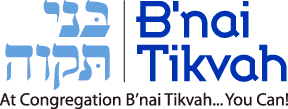There is a difference between knowing how to read and knowing how to read. Case in point:
In 1920’s Soviet Russia, in the middle of the jockeying for power following Lenin’s death, Stalin emerges to address an expectant crowd. “Comrades!,” he says. “I have in my hand a telegram from Comrade Trotsky, which I think will resolve our current differences of opinion. Let me read it to you: ‘You were right and I was wrong. You are the true heir of Lenin. I should apologize. Signed, Leon Trotsky. PS: May you live! So long.
The crowd goes wild! But wait, there’s one man in the crowd signaling to get Stalin’s attention. “Yes, comrade?” Stalin asks. “Comrade Stalin, I think you know Comrade Trotsky is Jewish.” “Yes, I do.” “Well, I’m Jewish, too, and I thought I might have an extra insight on what Comrade Trotsky was trying to say. May I read the telegram myself?” “Of course, comrade!” Stalin says.
The man gets up and starts reading: “You were right and I was wrong? You are the true heir of Lenin? I should apologize? Signed, Leon Trotsky. PS: May you live so long.”
The difference between knowing how and knowing how doesn’t just show up in inflection. It also is reflected in editing. What stays in and what comes out matters. A lot.
An important example of this is found in the last paragraph of the public kedushah, which begins with the words “L’dor va’dor” “From Generation to Generation.” This is a phrase which has become ubiquitous in modern Jewish life. It reflects a heartfelt desire to pass on traditions, memories, wisdom, relationships, and family history from one generation to the next. All well and good.
But that’s not how the phrase is used in the siddur. There, at the end of the kedushah (arguably the peak moment of the whole service), the phrase is “L’dor va’dor… ,” “From Generation to Generation…,” “nagid godlechah” “we will tell of Your (i.e. G-d’s) greatness.” That is our ultimate purpose on, if you’ll pardon the expression, G-d’s good earth. So we should ask ourselves what, exactly, is happening, and what, exactly, isn’t happening, when we don’t read “L’dor va’dor” the right way. When it is read solely as a pledge to intergenerational continuity, then we have to wonder what, exactly, we are trying to continue. Speaking personally, I think of things like the immigrant struggles of my grandparents, their suffering as a result of anti-Semitism, their sincere efforts to Americanize, leading to the patriotism of my parents, and of course their devotion to my sister and me in the hopes that we would build and enjoy a better life. To be sure, this is not an exhaustive list, and it is a collection of honorable character traits, to say the least. But almost all of it comes as a reaction to external circumstances (the pogroms, Ellis Island, the draft, no-Jews-or-dogs-allowed-discrimination, etc.) All of this happened to Jews. But what of it is Jewish? What of it is a reflection of our own national character, our own time-honored values? Very little. They can perhaps be parsed out obliquely. The resilience, the dignity, the decency had to come from somewhere. But where?
As Rabbi Abraham Joshua Heschel liked to remark, “We are messengers who have forgotten the message.” The message is the greatness of G-d. What we suffer through, we suffer through to be able to proclaim that. What we celebrate, we celebrate in order to proclaim that. That is what we, twice a day every day, pledge to do–L’dor va’dor.”
